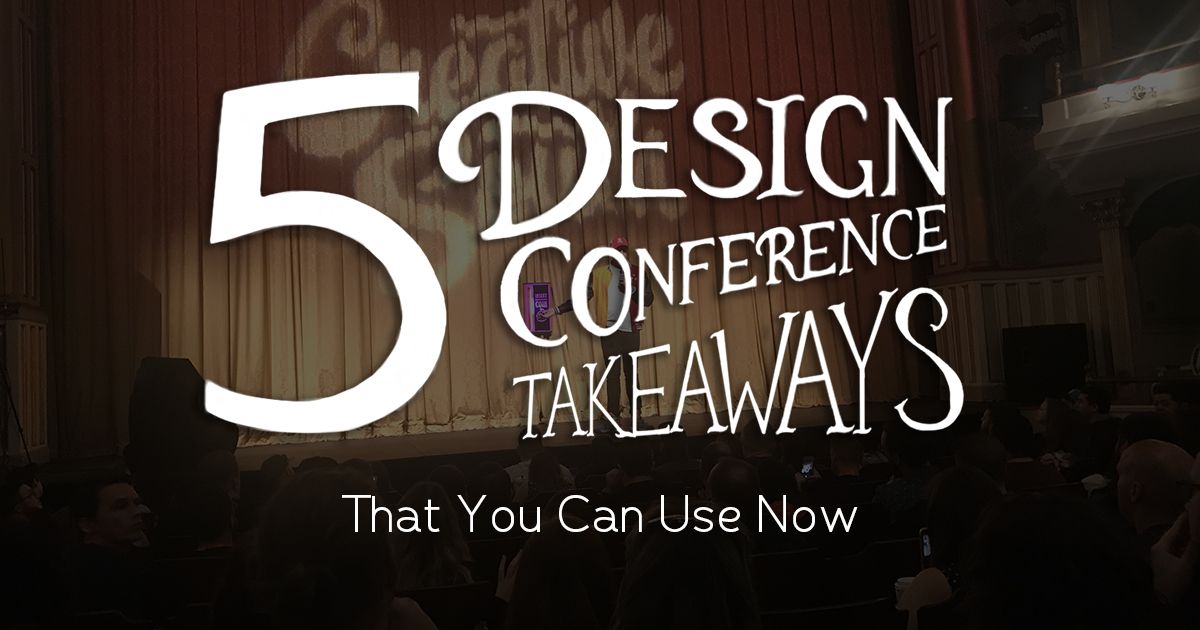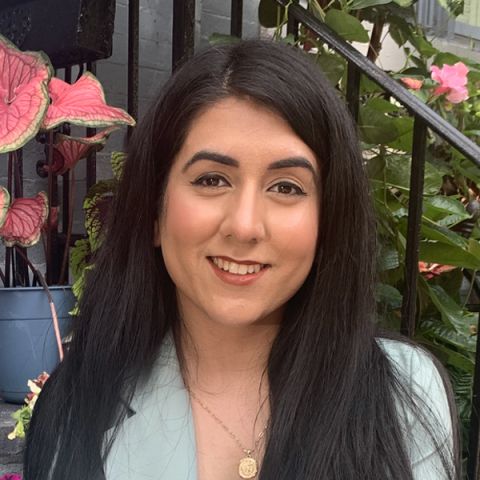No matter how amazing your clients and co-workers are, being in the office all day can burn you out. Sometimes you need to step out of the office and explore what others in your industry are doing to get a much-needed jolt of inspiration. Here at LMD, we encourage staff to learn, grow, and expand their skill sets through LMD-wide training days, team building events, and pursuing our own individual professional interests.

I just came back from the 9th annual Creative South conference in Columbus, GA and had an amazing time. This was my second year attending, and once again I returned motivated and full of ideas. This three-day conference features workshops and lectures on subjects ranging from creating accessible design to helping clients solve problems and more. This year, I came back with five key takeaways that will change the way I think about design.
-
Pick Fights.
Don’t get me wrong—I’m not advocating for arguing with clients. Conference speaker and Black Roses founder Dex Alexander explained that the ultimate goal is to use design and creativity to differentiate your client from their competition and solve your client’s problems. And that means ensuring that the solution the clients wants is the best possible strategy. To do this, you have to ask hard questions right off the bat. Healthy debate and productive—even provocative—discussions will help you and the client determine if the project they requested (say, a logo refresh) will actually help solve the issues they have with their brand.

Dex Alexander, Founder of Black Roses
-
Making Accessible Design is Cheaper than a Lawsuit.
As designers, we have a huge impact on the world around us. We create experiences that send messages—and, with one in seven people having a disability, it’s critical that those messages can be understood by all types of people.
Cat Noone, founder of Iris, spoke about the importance of making design accessible to all. She emphasized the importance of asking ourselves, “Who am I excluding in my design?” when creating. Accessibility is not only the socially responsible thing to do, but more inclusivity means reaching a larger audience—and who doesn’t want that? To drive home her point, Noone and all other speakers at the conference used closed captioning—an important accessibility aid for hearing-impaired audiences—throughout their presentations to strengthen the conference’s accessibility. Other ways to increase accessibility include using Instagram’s alternative text features for visually impaired and creating accessible user interfaces for the colorblind.
Cat Noone, Founder of Iris
-
Don’t Be S.A.F.E.
Several speakers at the conference talked about taking risks and trying things you haven’t done before. Chris Do, conference speaker, designer, and founder of several businesses, stressed that staying safe doesn’t work in the design industry. Simply put, he said safe means “Staying Average For Ever.” While it’s important for design to be relevant and on-trend, designers need to pitch unique, cutting-edge ideas to their internal teams and clients. After all, nobody made waves by repeating the status quo.

My friends and I with Chris Do (second from the left)
-
It’s Okay to Fail
Chris Do also said, “Failure is the tuition you pay for success.” Failing occasionally is an essential part of the creative process (especially if you are dedicated to taking risks). It may take a few tries, a few iterations, and a few risks to get it right. Speaking to the designers reading this, I’m sure you’ve had more than one “LogoDesign_2019_Final01-V7-FinalVersion-FINAL.pdf” in your career. Take a leap and try something “out there” without fear of getting it wrong.

Carolyn Sewell, Lettering Artist
-
Curiosity Doesn’t Kill Creatives
We should always ask questions to our peers, our bosses, and our role models. It never hurts to get a little feedback and advice from others. As a young designer, I still have a lot to learn, but interacting with other designers and professionals at this conference and at LMD makes it easy to ask questions. It’s also a great way to make friends in the industry!

Me (center) with all the friends I have made at Creative South over the last two years.
Back at LMD after the conference, I’m motivated to implement what I learned so that I continue to grow. After spending a weekend surrounded by new people and new ideas, I returned to work reinvigorated and inspired. I hope that these takeaways were helpful to you—and that you find opportunities to inspire yourself outside the office.

